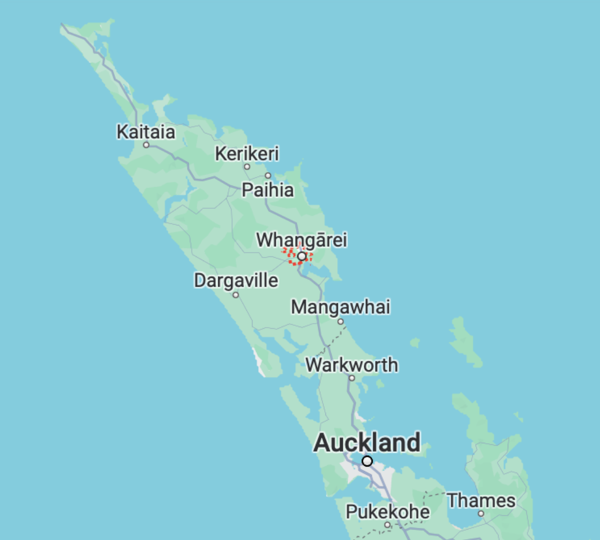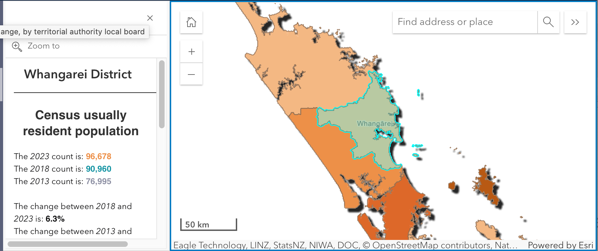Whale update: most were saved.
Most of the 40 pilot whales that were stranded on a Northland beach have been refloated following a mammoth effort from volunteers.
Whale rescue organisation Project Jonah received calls about 4.30pm Sunday that the whales were in trouble at Ruakākā beach …
About 200 people raced to the beach to help, and the majority of the whales were refloated and were being monitored by 8pm, Project Jonah said on Facebook.
Four whales died in the stranding.
Via: Rescuers race to help 40 whales stranded at Northland beach | RNZ News.
So sad the whales have stranded; so glad so many people are helping — Rescuers race to help 40 whales stranded at Northland beach | RNZ News:
About 40 pilot whales have stranded on [Ruakākā] beach, and hundreds of locals and volunteers are trying to help them as the tide goes out.
We no longer have any pets, but this is handy info: Dogs on leash now allowed in Whangārei CBD, seven more dog-friendly beaches unveiled - NZ Herald.
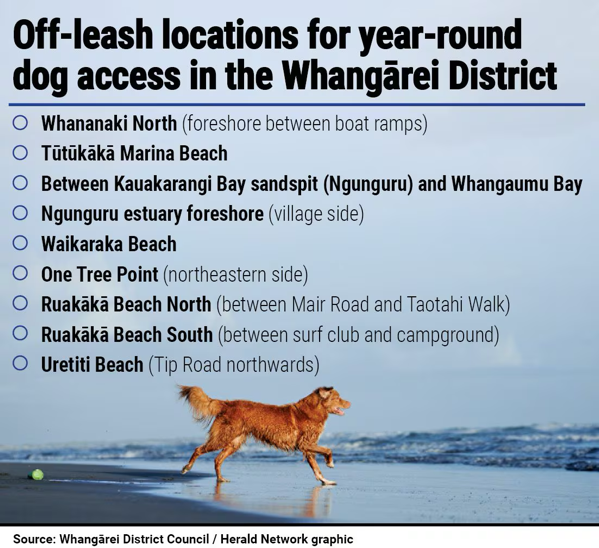
See also: Changes to dog bylaws - Whangarei District Council.
Sand mining proposal for Bream Bay endangers birds
Perhaps the most controversial project on the [Government's Fast Track consenting] list - given opposition to similar operations further down the coast - is a proposal to mine sand off Waipū Cove in Bream Bay.
Natalie Jessup, general manager of Tāngaro Tuia te Ora-Endangered Species Foundation, said the potential fast-tracking of sand mining was deeply disappointing.
"This is a heart-breaking blow for Aotearoa's coastline. Bream Bay, like Mangawhai and Pākiri, is home to some of our most vulnerable species, including the critically endangered tara iti [New Zealand fairy tern]. Approving sand mining here is not only environmentally destructive but a betrayal of the communities who have fought to protect these areas for decades."
Via: Northland's fast-track approvals show heavy focus on infrastructure
Humpback whale breaches in Whangārei Harbour
See the video: Northlanders up close with humpback whale, as Whangārei Harbour listening starts:
A humpback whale has put on a stunning display in Northland, breaching in front of a boat off Whangārei’s coast.
The encounter occurred at the same time as a trial started of an AI-powered acoustic detection system in Whangārei Harbour, which will soon give real-time information about marine mammals in the harbour. …
The next day, Taylor was playing golf at Waipu Golf Club when he also saw a humpback whale - possibly the same one - breaching off Bream Bay.
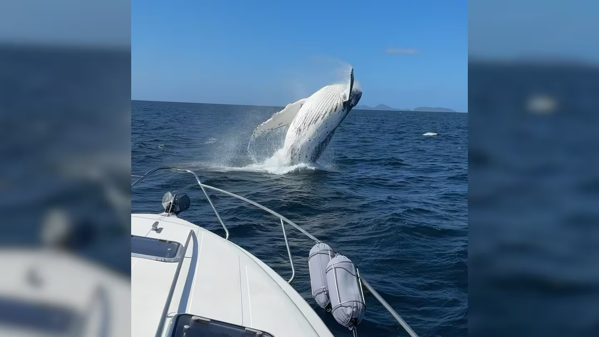
Buoy to alert shipping to dolphins and whales in Whangārei Harbour
A new device, which can detect when marine mammals are present in Whangārei Harbour was installed last week at the harbour entrance. … The new acoustic recording system has software that can identify the species of animal and, if several hydrophones are used, it can calculate the latitude, longitude and depth of a noise source. It will transmit this information in real time back to an internet enabled device.
Via: Bream Bay News, 03 October 2024.
Update, 05 October 2024 via Northlanders up close with humpback whale, as Whangārei Harbour listening starts - NZ Herald:
The system is a passive listening device which hears underwater and uses several AI deep-learning algorithms to classify the sounds, differentiating whale and dolphin noises from other harbour noises.
Whangārei’s cruise ships
Whangārei’s fledgling cruise ship industry expected to boom:
Four cruise ships are expected into Northport at Marsden Point, about 35km from Whangārei, between January and March.…
Whangārei’s fourth cruise ship visitor will kick off the 2024/2025 season on January 18, with a maximum of 770 passengers.
The Azamara Pursuit will be followed by the Azamara Onward on Waitangi Day, with the same number of passengers. The Seven Seas Voyager will arrive four days later with a maximum of 705 passengers. Nautica, the season’s final cruise ship, is scheduled for March 24 with a maximum of 685 passengers.
Consent granted for large solar power station at Ruakākā
Consent granted for large solar power station at Ruakākā in Northland | RNZ News:
Consent has been granted for a solar power station at Ruakākā in Northland that will produce more than three times the energy of the biggest solar farm currently operating in New Zealand.
If all goes to plan, Meridian's Ruakākā Solar Farm will start producing power in late 2026.
The 200,000-panel solar farm will be spread over three sites at Marsden Point totalling 172 hectares, with a peak output of 120 megawatts (MW).
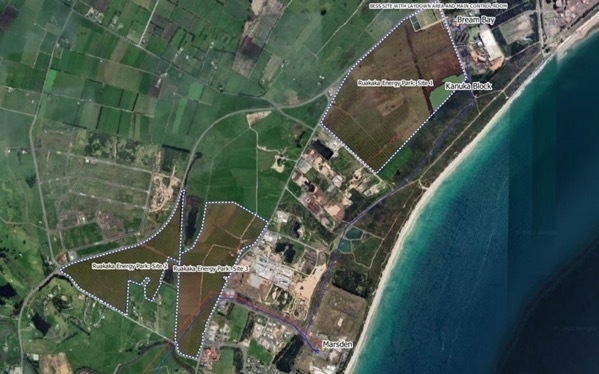
172-hectare solar farm to be built at Ruakākā Energy Park
Independent hearings commissioners have granted an application by Meridian Energy Limited (MEL) to build a multi-million dollar 172-hectare solar farm across three sites at Marsden Pt, Ruakākā. …
The application also proposed the creation, enhancement and restoration of 18.86ha of wetland across the three sites to offset the permanent removal of 17.06ha of wetlands. …
“This culminated in the purchase of three sites at Marsden Point, and the consenting and construction of a Battery Energy Storage System (BESS) on the northern-most site (corner Rama Road and SH15) as the first stage of the Ruakākā Energy Park.”
Two hundred thousand solar panels would be installed to construct the 100-150MW farm which would produce 150-200GWh of electricity annually.
Via: Consent granted for 172-hectare Bream Bay solar farm - Northland Regional Council.
There are many stories about the origin of the name Ruakākā. One tells of two kākā parrots that flew in different directions along the beach. But local iwi say it's actually an ancient name from Ngāti Manaia and Ngaitāhuhu tūpuna, who Patuharakeke descend from.
"The name applies to a small sentinel pā that was situated on the banks of the Ruakākā estuary or river," Carrington told Newshub Nation.
"In ancient times this pā had commanding views of the estuary from which the alarm would be raised to alert the other pā in the district, such as the main pā at Rangiora, Ngātītī and Pākauhokio at Takahiwai."
Via: Ruakākā community calls for macrons on road signs to stop 'two poos' mistranslation | Newshub, 07 September 2019.
Endangered birds at the estuaries
Beyond the wintry beaches of Bream Bay:
Spot endangered birds at the estuaries
The river estuaries at Waipū and Ruakākā are internationally significant bird-nesting habitats. The rare and endangered New Zealand dotterel, variable oystercatcher, New Zealand fairy tern, reef heron, wrybill, caspian tern, banded dotterel, and migrating godwits all nest in the area.
Tamure Place, Ruakākā
Big day as we signed up for a land and house package at Ruakākā, on the east coast about 20 minutes drive south of Whangārei.
This time next year (or before) we'll be living up there.
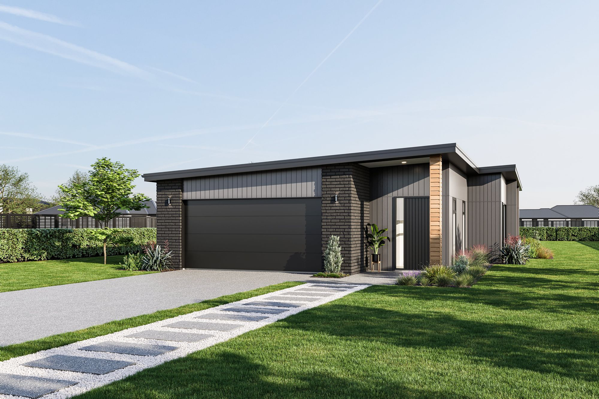

Southern right whale near Whangārei Harbour
Southern right whale spotted near Whangārei Harbour a ‘promising sign’ - NZ Herald, 26 August 2024:
A couple fishing in Whangārei caught more than they bargained for when a southern right whale decided to give them a majestic performance.
Pauline and Alan Hall spotted the whale just outside the entrance to Whangārei Harbour, near Busby Head, on Thursday. …
Southern right whales are mostly black in colour and can easily be identified by lack of a dorsal fin, a V-shaped blowhole spray and white growths on their heads called callosities, according to the Department of Conservation.
Ruakākā Wastewater Treatment Plant
Bream Bay News 08 August 2024, Page 4:
In the Bream Bay area, we’ve committed to the upgrade and expansion of the Ruakākā Wastewater Treatment Plant to keep pace with growth. The damage to the community's wastewater system in Kepa Road is currently under investigation, as that infrastructure has degraded far earlier than expected.
Birds and archaeology at Ruakākā
Bream Bay Strategic Plan 2006:
It is a place unique for its variety of coastal and shoreline bird-life, the Ruakaka and Waipu estuaries and nearby open shores providing an internationally important habitat for several species which are critically endangered. Fairy terns, NZ dotterel and variable oystercatchers all nest and feed on this coast. More common godwit, knot, turnstones, caspian tern, white fronted tern and Australasian gannet use the coast and the estuaries.
Archaeological sites around the estuaries of the Ruakaka and Waipu Rivers include pa, pits and terraces, and extensive midden. Intensive surveys of the coast have yet to be carried out. Sites of historical significance include the Nova Scotian landing at Waipu and the graves of these early immigrants, as well as evidence of gum digging, mining and early sawmilling.
Ruakākā development
Ruakākā
Ruakākā area is made up of Ruakākā Beach, Ruakākā Township and Marsden Point. Ruakākā has seen development due to its proximity to the expansion of the country's only oil refinery at Marsden Point during the 1980s. A timber processing plant at Marsden Point has further stimulated growth.
Major port expansion in Whangārei Harbour rejected
Northland iwi 'vindicated' by rejection of plans for major port expansion in Whangārei Harbour:
A Northland hapū says it has been vindicated by a surprise decision to reject plans for a major port expansion in Whangārei Harbour.
This week, commissioners declined a raft of resource consents required by Northport, which operates the deepwater port at Marsden Point, to build a dedicated container terminal.
The company sought consents for, among other things, a 12-hectare reclamation, a 250-metre wharf extension, and 1.2 million cubic metres of dredging.
Whangārei city and environs
Whangārei lies about 165 Km north of Auckland and about 260 Km south of Te Rerenga Wairua | Cape Reinga, at -35.5515, 174.3414.
Nestled in a broad valley between hills to its west and east, the city lies on a long inlet of Whangārei Harbour on Northland’s east coast. Initially a service centre for the surrounding district, it has developed through its proximity to some of the country’s deepest harbour waters, and through the north’s expanding tourism.
